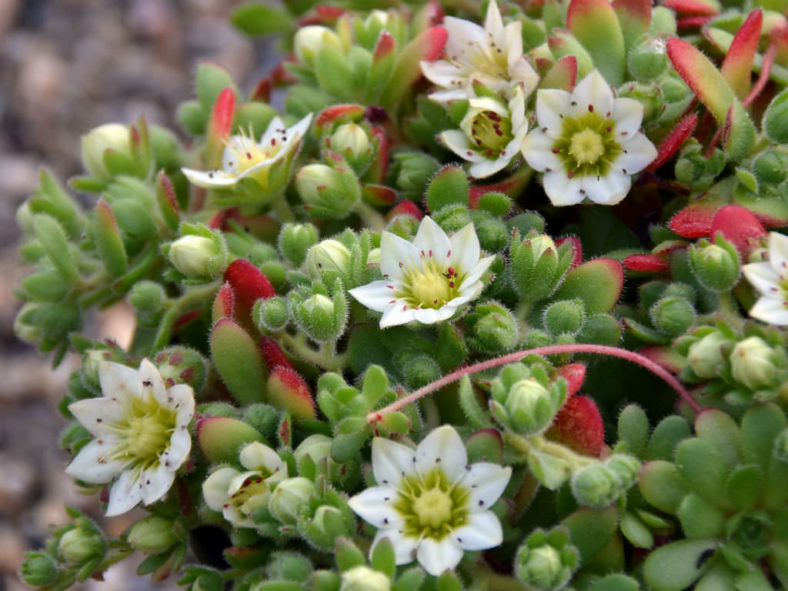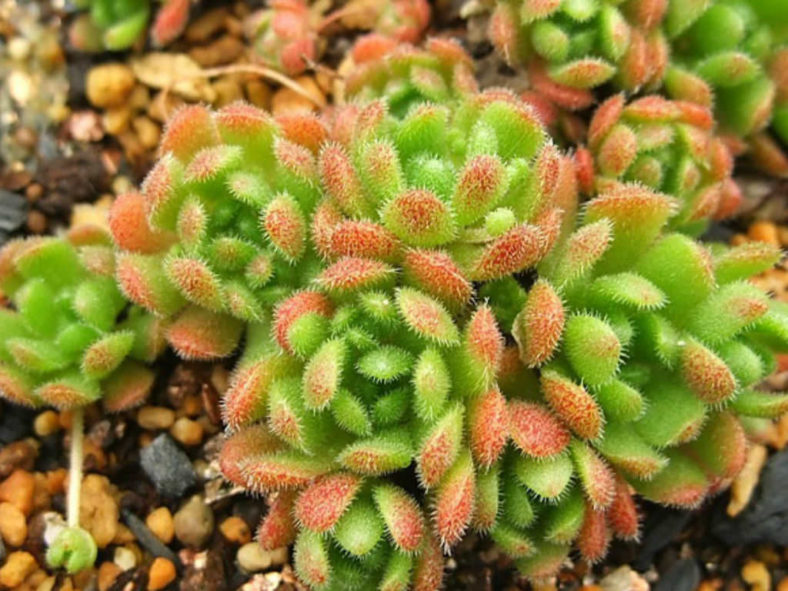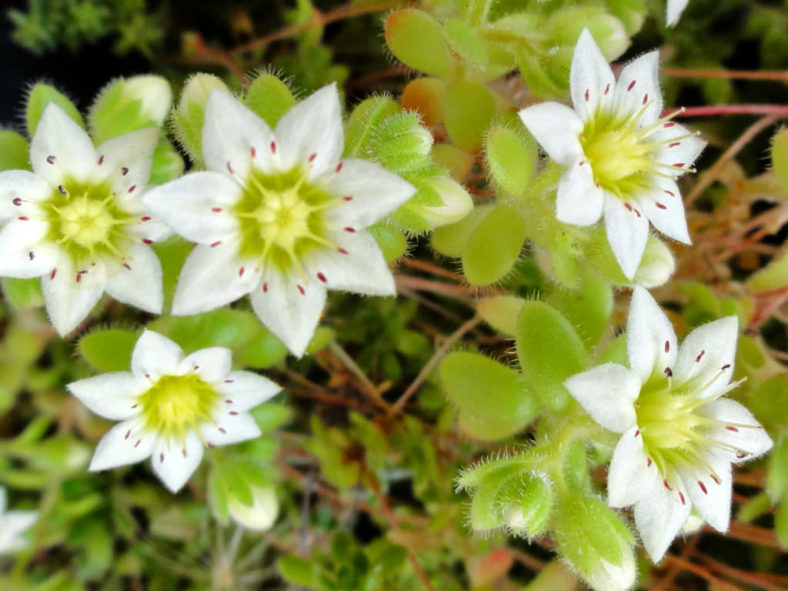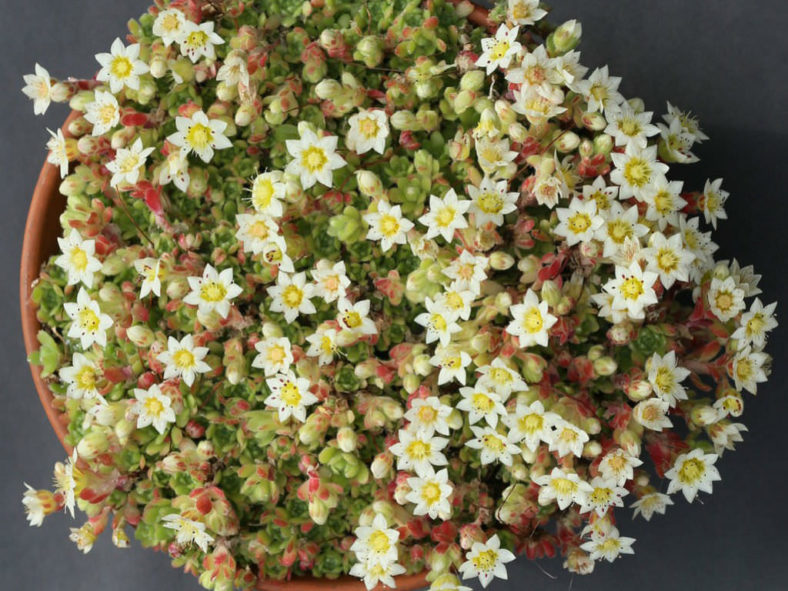Scientific Name
Sedum sedoides (Decne.) Pau ex Vidal & Lopez
Synonym(s)
Rosularia sedoides, Rosularia sedoides var. alba, Sempervivella sedoides, Sempervivum sedoides
Scientific Classification
Family: Crassulaceae
Subfamily: Sempervivoideae
Tribe: Sedeae
Genus: Sedum
Origin
Sedum sedoides is native to northern India (Himachal Pradesh, northern Uttar Pradesh) and Kashmir. It grows at elevations between 6,560 and 9,840 feet (2,000 and 3,000 m).
Description
Sedum sedoides is a low-growing succulent that forms small rosettes of densely hairy, fresh green leaves, often with red tips. The rosettes grow up to 1.4 inches (3.5 cm) in diameter, freely producing offsets with long, slender stolons and forming loose cushions. Leaves are spoon-shaped with a rounded tip, up to 0.4 inches (2 cm) long and up to 0.2 inches (0.5 cm) wide.
The flowers are saucer-shaped, 6- to 8-merous, around 0.6 inches (1.5 cm) across, glandular-hairy on the outer surface, and appear in terminal clusters in early fall. The petals are white with a greenish base.

Hardiness
USDA hardiness zones 5a to 10b: from −20 °F (−28.9 °C) to 40 °F (+4.4 °C).
How to Grow and Care
When growing Sedums, keep in mind that these plants need very little attention or care. They will thrive in conditions many other plants thrive in but do just as well in less hospitable areas. They are ideal for that part of your yard that gets too much sun or too little water to grow anything else. Sedum's common name is Stonecrop because many gardeners joke that only stones need less care and live longer.
Sedum is easily planted. For shorter varieties, laying the plant on the ground where you want it to grow is usually enough to start it there. They will send out roots from wherever the stem touches the ground and root itself. If you would like to ensure further that the plant will start there, you can add a very thin covering of soil over the plant.
You can break off one of the stems for taller varieties and push it into the ground where you want to grow it. The stem will root very easily, and a new plant will be established in a season or two.
See more at How to Grow and Care for Sedum.
Links
- Back to genus Sedum
- Succupedia: Browse succulents by Scientific Name, Common Name, Genus, Family, USDA Hardiness Zone, Origin, or cacti by Genus
Photo Gallery


